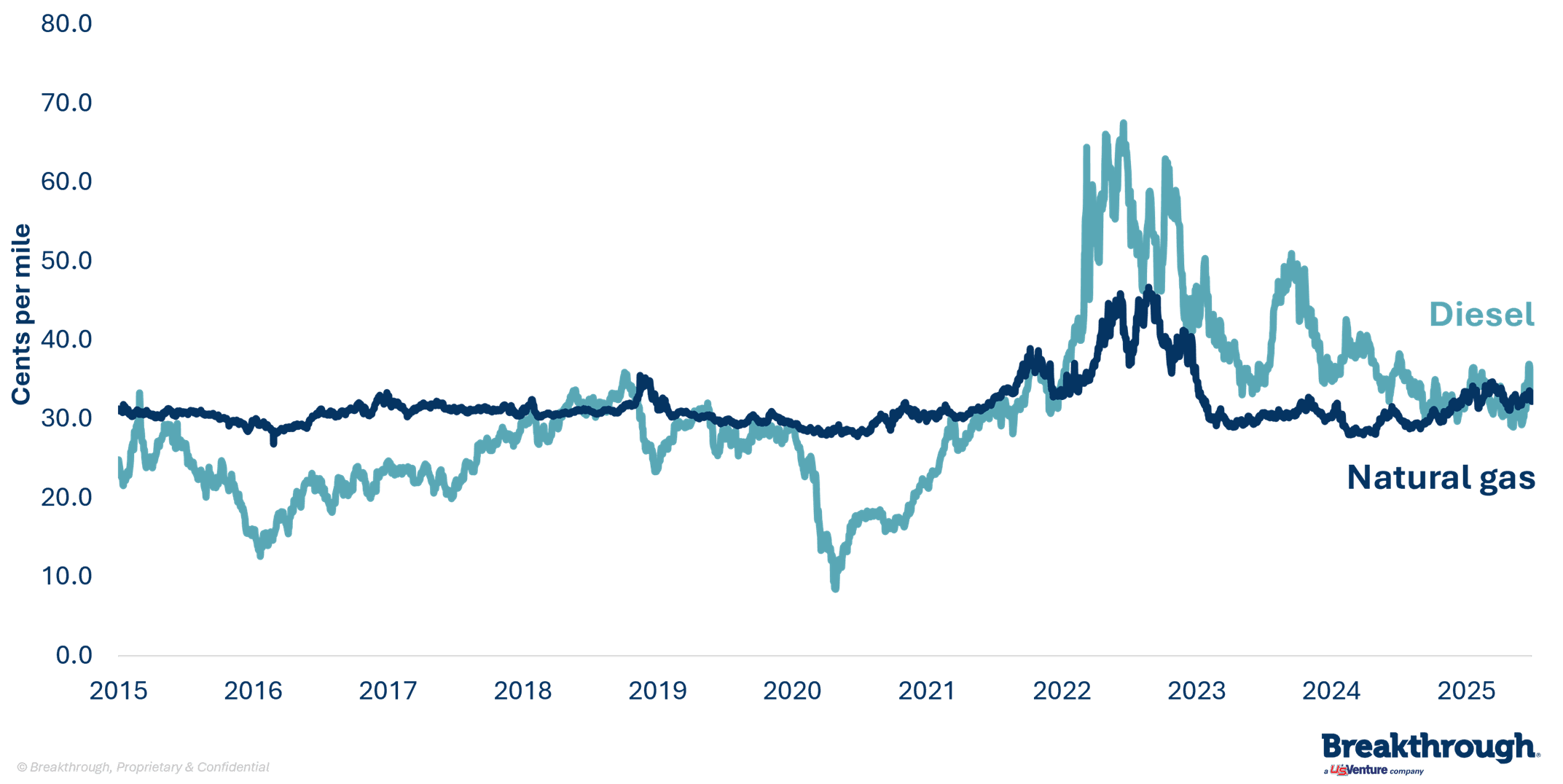How AI in Transportation will Accelerate Strategies in 2026

Trending
Top Posts
3 min read
August 14, 2025

Share:
Table of contents
Browse the table of contents to jump straight to the part you’re looking for
Disruptions are inevitable in transportation, but resilient and agile strategies can bring greater certainty to operations. In late 2024, 92% of shippers who took part in Breakthrough's 2025 State of Transportation survey stated that they were confident in their organization’s ability to handle disruptions. In 2025, shippers’ strategies were upended by evolving trade policies, macroeconomic shifts, and mergers, acquisitions, and divestitures. These changes are driving transportation leaders to continuously evaluate their processes and partnerships, ensuring optimal efficiency across their networks.
Staying agile and resilient is essential for adapting to a fast-changing marketplace and remaining competitive. Transportation inefficiencies often increase costs, delay deliveries, and hurt customer satisfaction, impacting profits and reputation. By taking a close look at energy, freight, and sustainability strategies through transportation analytics platforms, shippers can quickly learn insights to identify opportunities and adapt to disruptions.
While transportation leaders remain confident in their organization’s ability to handle disruptions, there are still unprecedented events that highlight the need for agility. Supply chain shortages and extreme weather events (44%), and regulatory changes (34%) are most likely to affect the industry, which means this confidence must be backed by proactive strategies and tools. Building resilience is critical for companies navigating today’s volatile landscape.
Organizations are focusing on strategic alignment, expanding best practices globally, and leveraging technological advancements to drive productivity and stay competitive.
Transportation leaders can take specific steps to increase their agility and withstand disruptions. Below are some of the most effective approaches we see industry-leading shippers adopting:
Strategic partnerships with transportation partners, suppliers, and carriers play a major role in ensuring continuity during disruptions. Collaborating with these key partners enhances capabilities, streamlines operations, and reduces dependency, creating a more resilient supply chain.
Route optimization tools and transportation analytics play a crucial role during mergers, acquisitions, and divestitures. These tools create opportunities to identify delivery delays, inefficiencies, and capacity issues, helping shippers uncover new efficiencies and streamline operations.
To mitigate risks such as domestic labor issues, 60% of shippers are using a mix of transportation modes, including trucking, rail, air, and maritime shipping. By following this trend, you can achieve significant cost and emissions savings. For example, in 2024, shifting from truckload to intermodal options like truckload and rail could cut emissions by 50% to 70% while reducing costs by 5% to 25%.
Switching to sustainable energy sources like natural gas offers environmental and financial benefits. With 67% of carriers citing cost savings as a key driver of their sustainability initiatives, and natural gas bringing greater cost stability and being more economical than diesel, alternative energy boosts sustainability and efficiency.

Resilience is more than just about survival—it’s about gaining a competitive edge. Companies who have strong partnerships and use a variety of transportation modes, alternative energies, and robust analytical tools are better positioned to maintain customer satisfaction and protect margins during volatile times. By embedding agility into your transportation strategy, industry leaders can withstand disruptions while continuing to meet demands.
Building resilient, agile networks requires both a strategy and a roadmap. The 2025 State of Transportation Report provides data-driven insights into industry trends, challenges, and best practices for shippers and carriers. From transportation analytics to cost-effective solutions, this comprehensive guide is crafted to help companies remain competitive, efficient, and resourceful in an evolving market.
Breakthrough’s Expertise
Learn how you can build resilience in your transportation network.


8 min read
December 23, 2025
Navigate fuel surcharge rates with our expert guide. Discover how to calculate fair reimbursements and overcome the limits of traditional fuel surcharge models.
Read more
5 min read
December 16, 2025
Explore the draft V2.0 SBTi corporate net-zero standard. Learn about new guidance on biofuels, EACs, and scope 1 and 3 emissions to reach net-zero by 2050.
Read more
8 min read
December 10, 2025
Learn how DOE fuel surcharges work, their limitations, and how market-based fuel reimbursement strategies improve cost accuracy in freight.
Read more